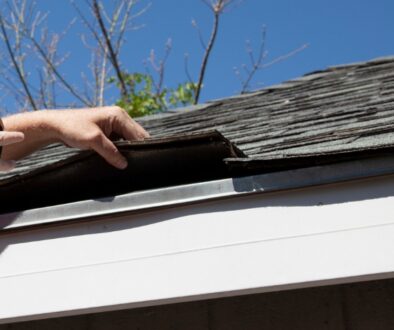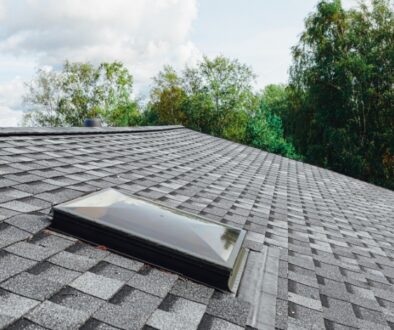Hail Damage 101: What Homeowners Should Check After A Storm
Here in La Crosse, Wisconsin, spring and summer storms are a fact of life — and with them comes the very real risk of hail damage. While a brief hailstorm might seem harmless at first glance, even small hailstones can cause significant damage to your roof and siding that isn’t always immediately visible. At Ledegar Roofing, we’ve helped hundreds of local homeowners navigate storm recovery. Whether you’re dealing with a direct hit or just want peace of mind, knowing what to look for after a storm can help you act fast, avoid long-term issues, and protect your home’s value. To help, we’ve created a simple checklist you can follow to assess for hail-related damage after a storm. If you spot anything suspicious — or just want an expert’s opinion — we offer free storm damage inspections and honest guidance, with zero pressure.
Why Hail Damage Matters
Hail damage isn’t just cosmetic. Left unchecked, it can lead to:
- Water leaks and interior damage
- Mold and rot under shingles or behind siding
- Reduced insulation and higher energy bills
- Compromised structural integrity over time
- Voided manufacturer warranties if not addressed
Even if you don’t see immediate signs of trouble, minor hail impacts can weaken roofing materials and siding in ways that only show up months — or even years — later.
Hail Damage Checklist: What To Look For
After a hailstorm, it’s important to safely assess your home’s exterior. Use this checklist to spot common signs of damage:
1. Inspect Roof Shingles
Look for:
- Bruising or dark spots that may feel soft to the touch, indicating granule loss
- Cracked or broken shingles that compromise the water barrier
- Excess granules in gutters or around downspouts
- Missing shingles that may have been lifted or dislodged by wind and hail
Note: Use binoculars or a smartphone camera to inspect from the ground. Avoid climbing on your roof unless you’re trained and it’s safe to do so.
2. Check Gutters And Downspouts
Hail damage often appears here first. Look for:
- Dents or dings in metal gutters and downspouts
- Detached sections or misaligned fasteners
- Blockages from roofing granules or debris
A compromised gutter system can lead to improper drainage and foundation issues over time.
3. Examine Siding And Trim
Vinyl, wood, and fiber-cement siding are all vulnerable to hail impact. Check for:
- Cracks, holes, or splits in siding panels
- Dented aluminum trim, fascia, or soffit
- Chipped paint exposing underlying materials
- Loose or warped panels due to impact stress
While siding damage might not cause immediate leaks, it can open the door for future moisture problems and energy inefficiency.
4. Inspect Windows, Screens, And Frames
Hail can damage more than just your roof and siding. Be sure to examine:
- Cracked or chipped glass
- Torn window screens
- Dented metal frames or sills
- Water stains or fogging inside windows, which may indicate broken seals
These issues can reduce energy efficiency and may require quick fixes to prevent further damage.
5. Survey The Yard And Surroundings
Walk your property and look for:
- Shingles or siding pieces on the ground
- Damage to fences, sheds, decks, or HVAC units
- Large hailstones that may still be visible — photograph them if possible
Damage to nearby structures is a strong indicator that your home’s roof and siding should be inspected.
When To Call A Professional
If you notice any signs from the checklist — or even if you’re unsure — contact Ledegar Roofing for free storm damage inspections. Our experienced team will provide a thorough assessment and walk you through your options.
Need Help After A Storm?
Ledegar Roofing has been serving La Crosse and the surrounding communities for over 100 years. Our team understands how storms impact Wisconsin homes — and we know how to respond quickly, professionally, and thoroughly.
Whether you’re filing an insurance claim or simply want to know where you stand, our free hail and storm damage inspections are a great first step.




